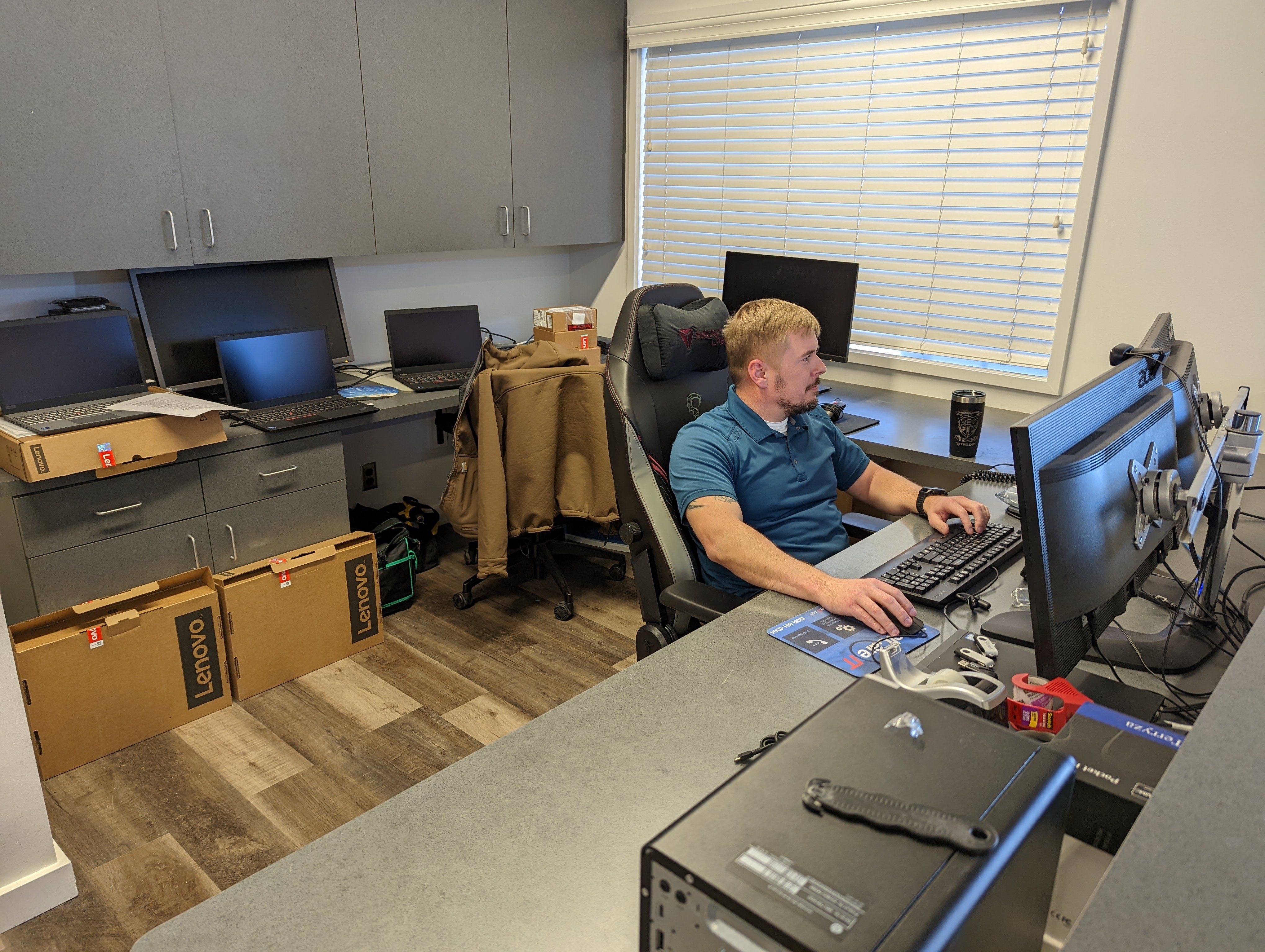The Importance of Multi-Factor Authentication (MFA) for Email and Beyond
Ensuring your online accounts are protected is more important than ever. One of the most effective ways to secure your accounts is by setting up ...
4 min read
![]() Totalcare IT
:
Jan 30, 2025 11:35:58 AM
Totalcare IT
:
Jan 30, 2025 11:35:58 AM
Think back to the last time your business experienced a tech disaster—whether it was a hardware failure, a security breach, or a data loss event. Chances are, the problem could have been prevented with the right systems and strategies in place. Technology may seem like a set-and-forget solution, but in reality, constant monitoring is key to ensuring that your systems stay secure, efficient, and cost-effective.
In this post, we’ll discuss why proactive monitoring is essential for preventing disasters and how it can save your business both time and money. We’ll also explain how TotalCare IT actively monitors clients’ environments to avoid costly downtime and prevent unexpected tech issues.
When technology fails, the effects on your business can be far-reaching. The immediate impact is often downtime, which can halt productivity, delay projects, and frustrate employees and customers. But the consequences can extend beyond just a temporary inconvenience. Tech disasters can lead to:
These risks highlight why proactive monitoring should be a top priority for any business. Let’s dive into how you can prevent these issues and keep your systems running smoothly.
In an ideal world, your IT systems would run without a hitch, and you wouldn’t have to worry about unplanned issues cropping up. But as any business owner or IT manager will tell you, the unexpected happens—whether it’s a malfunctioning server, a cyber attack, or a sudden spike in traffic that overwhelms your network.
Proactive monitoring is the practice of keeping a close eye on your network, devices, and data in real time. This approach allows you to identify potential problems before they escalate into full-blown disasters. Here’s why monitoring matters:
1. Prevention is Better than the Cure
The old adage is true: “An ounce of prevention is worth a pound of cure.” Proactive monitoring allows you to catch potential issues early, so you can take action before they cause significant damage. For example:
2. Minimize Downtime and Keep Business Running
Downtime is one of the biggest threats to any business, and even a few hours of lost productivity can translate into lost revenue and frustrated employees. Proactive monitoring ensures that problems are detected and addressed before they impact your business operations.
For example, if a server is running low on storage or if a critical software update is pending, monitoring systems will flag these issues and allow your IT team to resolve them without waiting for something to break.
3. Plan for the Future with Roadmaps
Effective monitoring isn’t just about fixing problems—it’s also about technology planning for the future. By analyzing system performance over time, you can spot trends and make data-driven decisions about upgrades, improvements, and replacements. This helps you avoid unexpected expenses when hardware needs replacing or software needs upgrading.
A proactive approach ensures that you’re not caught off guard by sudden costs and allows you to plan upgrades within your budget.
Now that we understand the importance of monitoring, it’s time to assess what kind of monitoring systems are currently in place for your business.
Network monitoring is a critical part of ensuring your systems are running efficiently and securely. This type of monitoring tracks the performance of your network, ensuring that your internet connection, internal systems, and any connected devices are functioning correctly.
Key areas to monitor include:
Proactive hardware monitoring allows you to keep tabs on the health of your devices—whether it’s a server, desktop computer, or printer. Monitoring tools can track factors like:
The digital world is full of threats, from malware and ransomware to phishing attacks and data breaches. Security monitoring tools help identify threats and block them before they can do any damage. Key aspects of security monitoring include:
With more businesses relying on cloud storage and remote servers, monitoring your cloud environment is just as important as monitoring on-site systems. Proactive cloud monitoring ensures that your data is safe and accessible, even in the event of an outage or breach.
In addition, backup monitoring makes sure your data is regularly backed up and easily recoverable in case of an emergency. Monitoring your backups ensures that they are completed on time and free of errors.
Having the right monitoring tools is one thing, but someone has to be actively looking at the data and taking action when needed. Who is monitoring your systems?
At TotalCare IT, we provide continuous monitoring of your environment. Our team actively watches your network, devices, and security systems to detect any anomalies or potential issues before they turn into major problems. This allows us to act quickly and proactively, rather than waiting for something to break.
We also work with our clients to create technology roadmaps for upgrades and improvements, ensuring that they’re never hit with unexpected costs or surprise downtime. Our approach isn’t just about fixing problems—it’s about preventing them and helping your business run smoothly and efficiently.
The reality is that many tech disasters are preventable with the right monitoring tools and a proactive approach. When you monitor your systems, you can catch issues early, plan for the future, and ensure your business stays secure and operational.
At TotalCare IT, we actively monitor your environment, keeping an eye on potential issues and taking action before problems escalate. Our goal is to help you avoid costly downtime, unplanned expenses, and unexpected disasters.
Want to learn more about proactive monitoring? Contact TotalCare IT today to discuss how we can help you implement a robust monitoring system that ensures your business runs smoothly—now and in the future.

Ensuring your online accounts are protected is more important than ever. One of the most effective ways to secure your accounts is by setting up ...

When you’re dealing with IT issues, time is of the essence. Whether it’s a network problem, a software glitch, or a system outage, delays in response...

Cybersecurity is more critical than ever. A single security breach can cause irreparable damage to your company’s reputation, financial stability,...